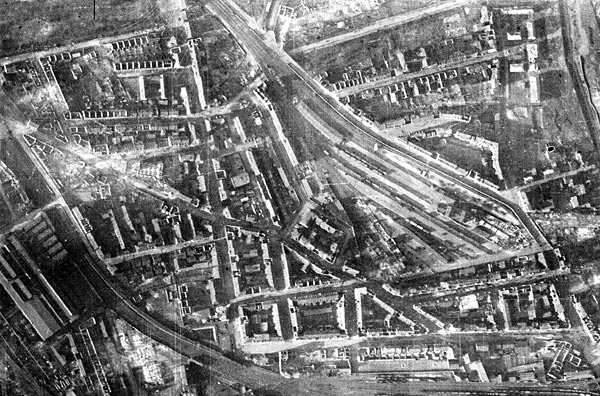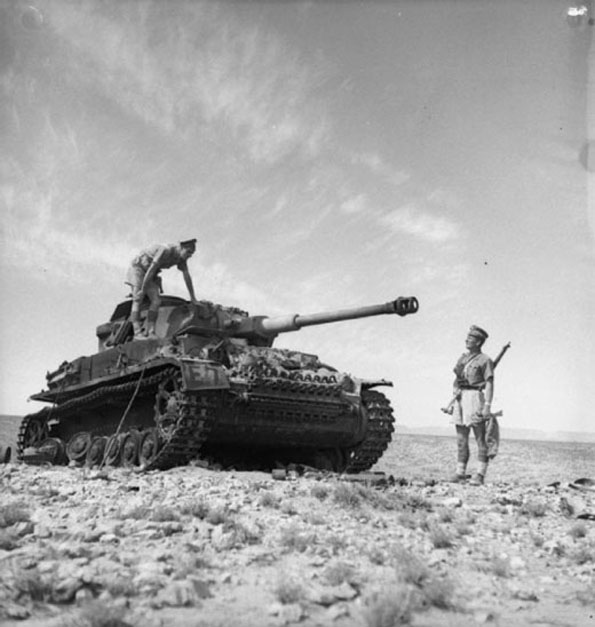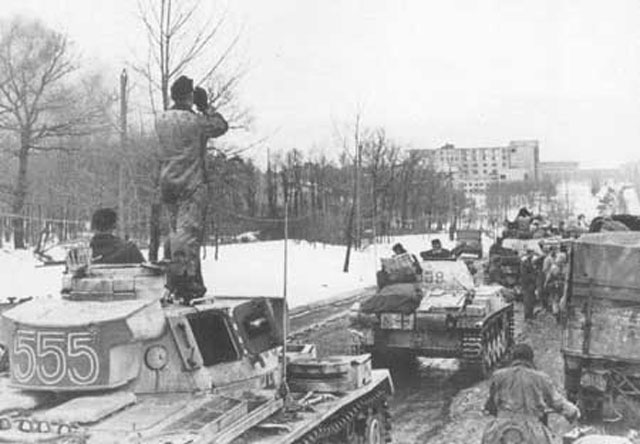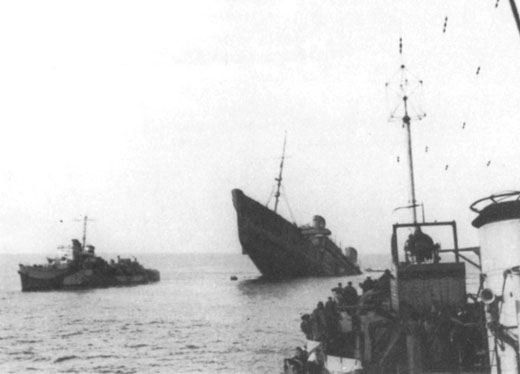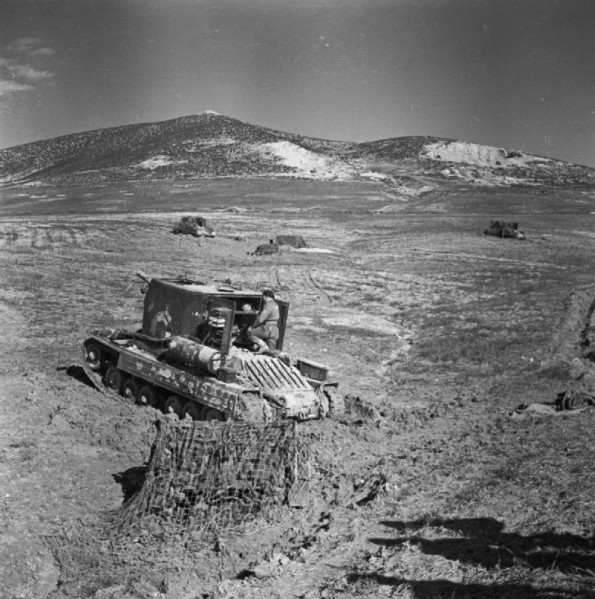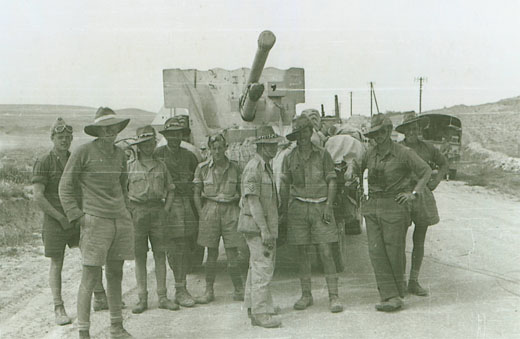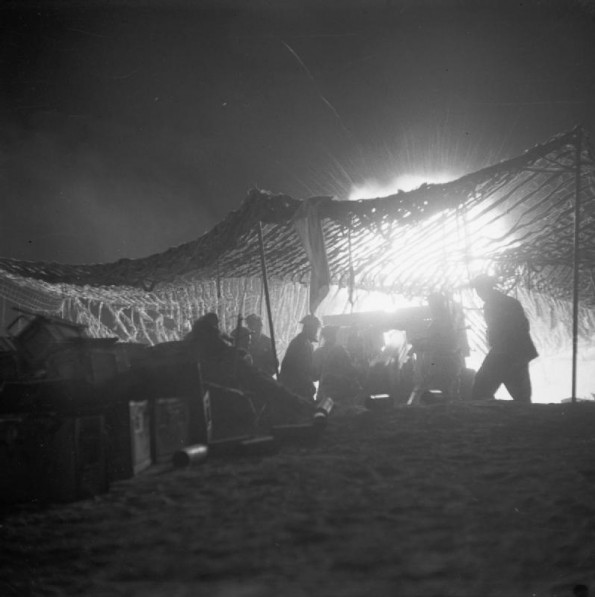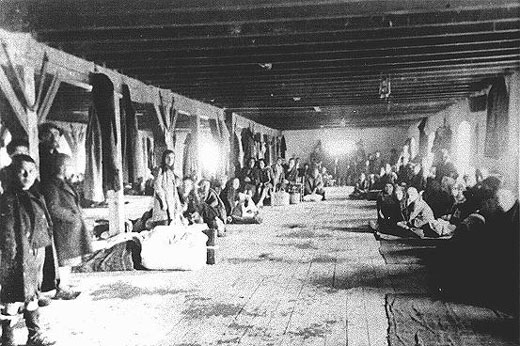Air Operations, Bismarcks
43rd Heavy Bomb Group B-17s attack Gasmata.
[Air Operations, CBI
BURMA- 46 51st Fighter Group P-40s attack targets of opportunity in the Hukawng Valley and around Nsopzup.
Air Operations, East Indies
90th Heavy Bomb Group B-24s attack shipping off the Sunda Islands.
[Air Operations, Europe
BOMBER COMMANDEvening Ops:
- 302 planes are sent to Berlin including 156 Lancasters, 86 Halifaxes and 60 Stirlings.
- The Pathfinders have a difficult time producing a concentrated marking because the individual parts of the extensive built-up areas of Berlin can not be distinguished on the H2S screens. Photographs from the raid show that bombs fall over a 100 square mile area with an area southwest of the city receiving the main emphasis. Because a larger number of aircraft are now being used with the ability to carry larger bomb loads, that portion of the force that does hit Berlin causes more damage than any previous raid to this target. Some bombs hit the Telefunken works at which the H2S set taken from the Stirling shot down near Rotterdam was being reassembled. The set is completely destroyed in the bombing but a Halifax of 35 Squadron with an almost intact set crashes in Holland on this night and the Germans are able to resume their research into H2S immediately.
- 7 Lancasters, 6 Halifaxes and 4 Stirlings are lost.
- 6 Mosquitos are sent to the Ruhr, 49 Wellingtons and Halifaxes lay mines off the French and German coasts and there are 4 OTU sorties.
- 2 mine-laying Wellingtons are lost.
ITALY:
IX Bomber Command B-24s attack Naples harbor and several targets of opportunity in southwestern Italy.
[Air Operations, Mediterranean
NASAF (Northwest African Strategic Air Force) B-26s attack an Axis freighter at sea north of Bizerte.
[Air Operations, New Guinea
- In the opening Allied move of the Battle of the Bismarck Sea, 6 RAAF Bostons mount an attack against the Malahang airfield at aimed at keeping Japanese aircraft grounded.
- 90th Heavy Bomb Group B-24s attack shipping in the Solomon Sea.
- 3rd Light Bombard Group A-20s attack Japanese Army ground troops and trails at several locations.
Air Operations, Sardinia
46 NASAF B-17s attack the docks, town, and rail lines at Cagliari. 1st and 82nd Fighter Group P-38 pilots down 5 Luftwaffe and Italian fighters in several running battles over the island between 1400 and 1415 hours.
[Air Operations, Tunisia
- 9 1th Medium Bomb Group B-26s, escorted by 82nd Fighter Group P-38s, are sent to bomb the La Hencha bridge on the road between Gabes and Sfax. A P-38 pilot downs 1 Bf-109 at 1430 hours.
- NATAF (Northwest African Tactical Air Force) provide direct support for Allied ground forces around Bedja and Sidi Nasr.
Battle of the Atlantic
- The US freighter Wade Hampton (7176t), straggling from Convoy HX-227, is torpedoed and sunk by U-405. The British corvette Vervain rescues 41 crewmen and 26 Armed Guard sailors from the freighter.
- The US freighter Fitz John Porter (7176t), in Bahia, Brazil-to-Trinidad Convoy BT-6, is torpedoed by U-518 and abandoned. 1 Armed Guard sailor is lost in the attack. Brazilian minelayer Carioca rescues the survivors.
CBI
BURMAThe construction of the Burma Road, the new route by which Allied supplies are to reach China, is completed. It runs from Ledo in India into Burma.
The Japanese re-group their forces to trap and eliminate the Indian 77th Chindit Brigade. The Chindit force is making slower progress than has been hoped, partly because it has been concerned to find clearings for supply drops, when in fact it later discovers that it is possible to recover supplies dropped in jungle areas. The Chindits continue to move east towards the Irrawaddy skirmishing with small Japanese garrisons along the way.
[Diplomatic Relations
Moscow tells the Polish government-in-exile it will claim eastern Poland, the lands seized in 1939, as Russian territory.
[Eastern Front
The Russians are on the offensive north of Moscow and capture the important town of Demyansk along with Lychkovo and Zaluchie, west of the Valdai Hills and southeast of Staraya Russa.
SOUTHERN SECTORSoviet casualties so far during the German counter-offensive in the Ukraine have been severe, combat units losing 23,000 killed, 9,000 captured, as well as 615 tanks and 350 arty pieces destroyed or captured.
The 40th Army goes over onto the defensive in positions along the Psel River. The 3rd Tank Army meanwhile attacks from Krasnograd toward Lozovaya with 2 tank corps, which combine total no more than 30 operational tanks. After a short advance the Soviets run into the SS Panzer Corps and are brought to an abrupt halt.
[New Guinea
Allied forces make steady progress pushing the Japanese back toward the northern coastline of New Guinea. The main offensive to clear the territory is scheduled for June 1943.
[North Africa
Gen Carl Spaatz takes command of the 12th Air Force, an organization that has been just a name since the air reorganization of February. The 12th Air Force is to be continued as the administrative headquarters for US Army elements of the North African Air Force.
[Occupied France
The Lens-Béthune Railway line is closed following the derailment of 40 wagons by the French Resistance Group 'Farmer'.
[Pacific
An American B-24 spots a Japanese convoy on its way from Rabaul to the Gulf of Huon in New Guinea.
[











